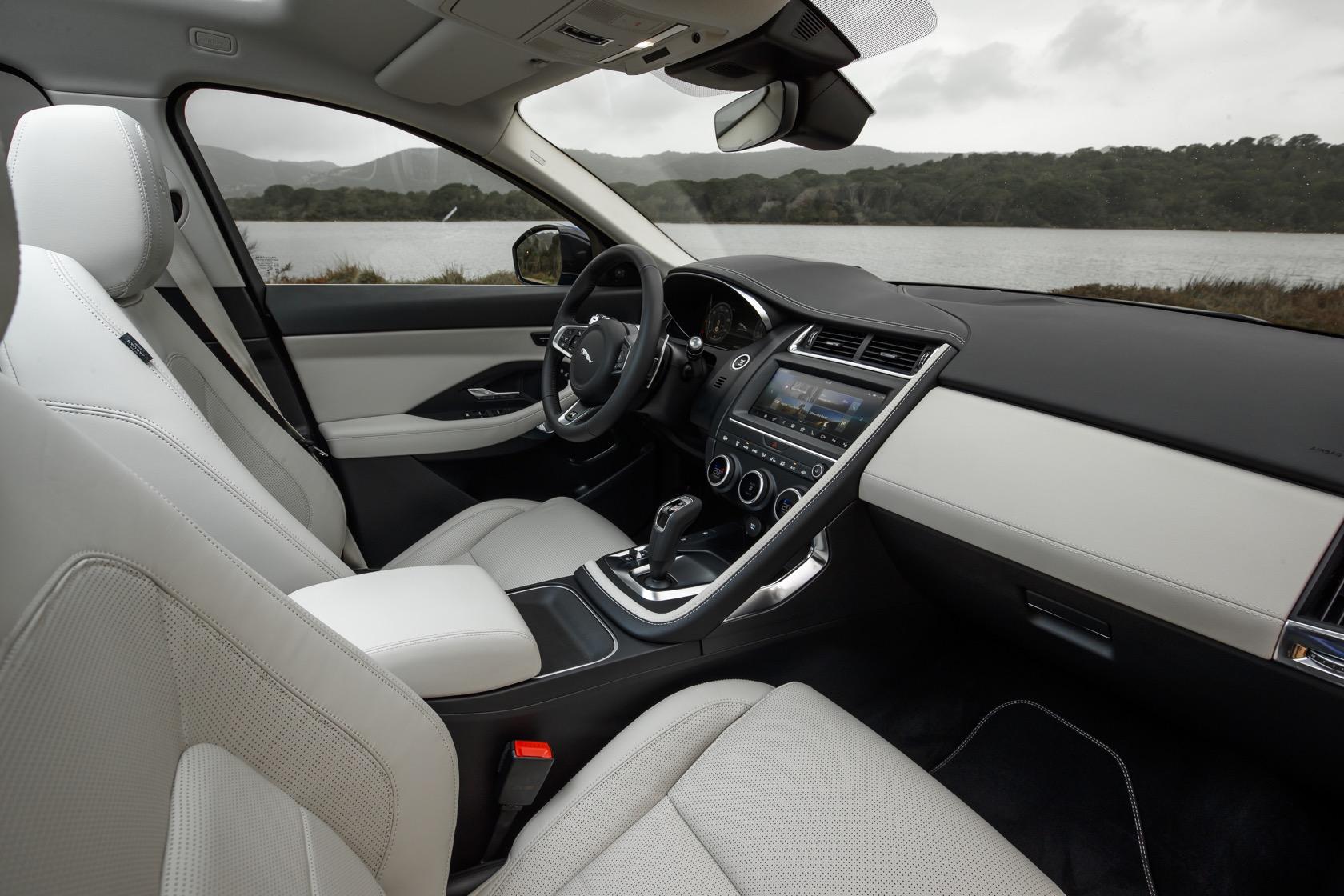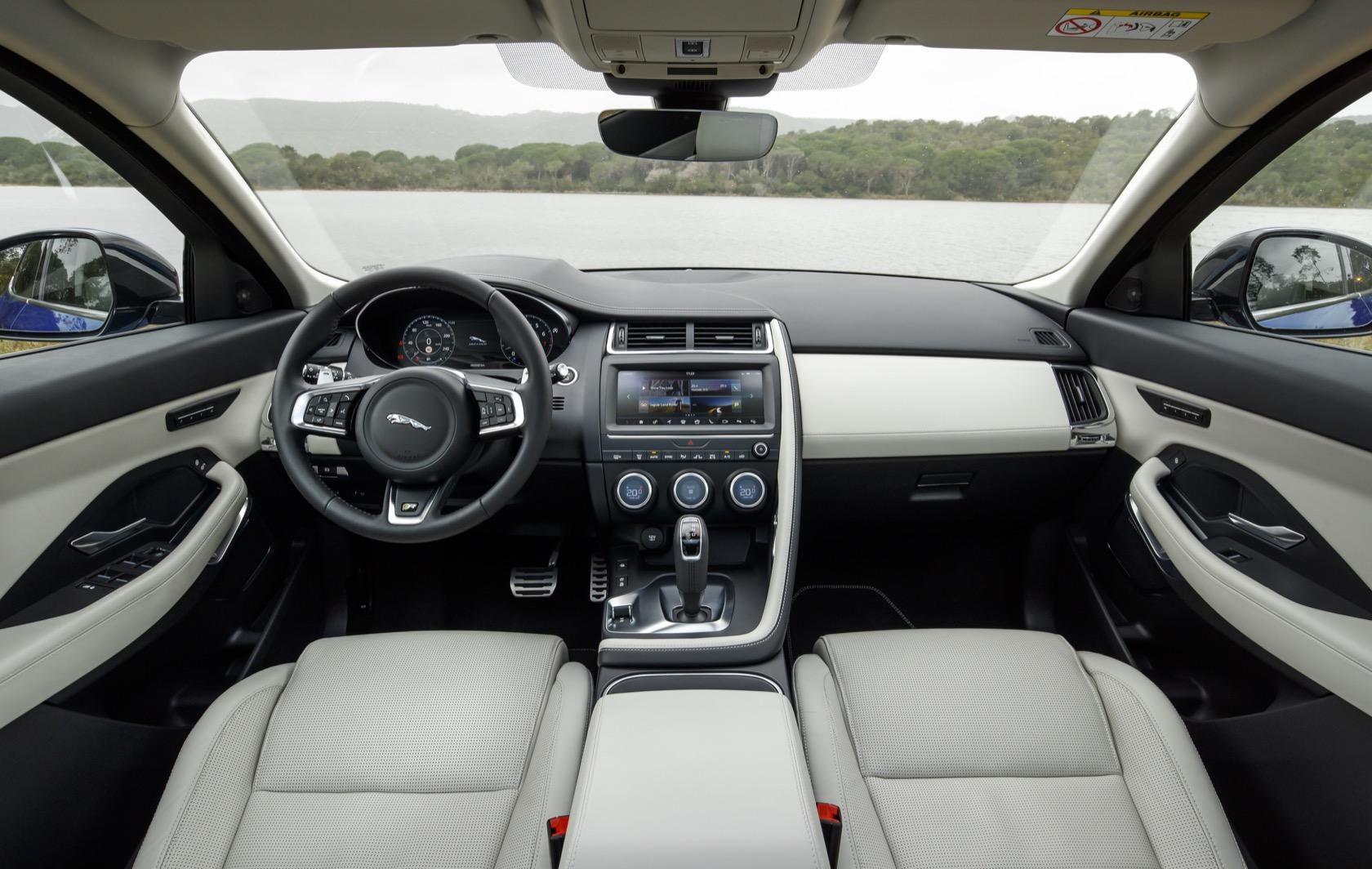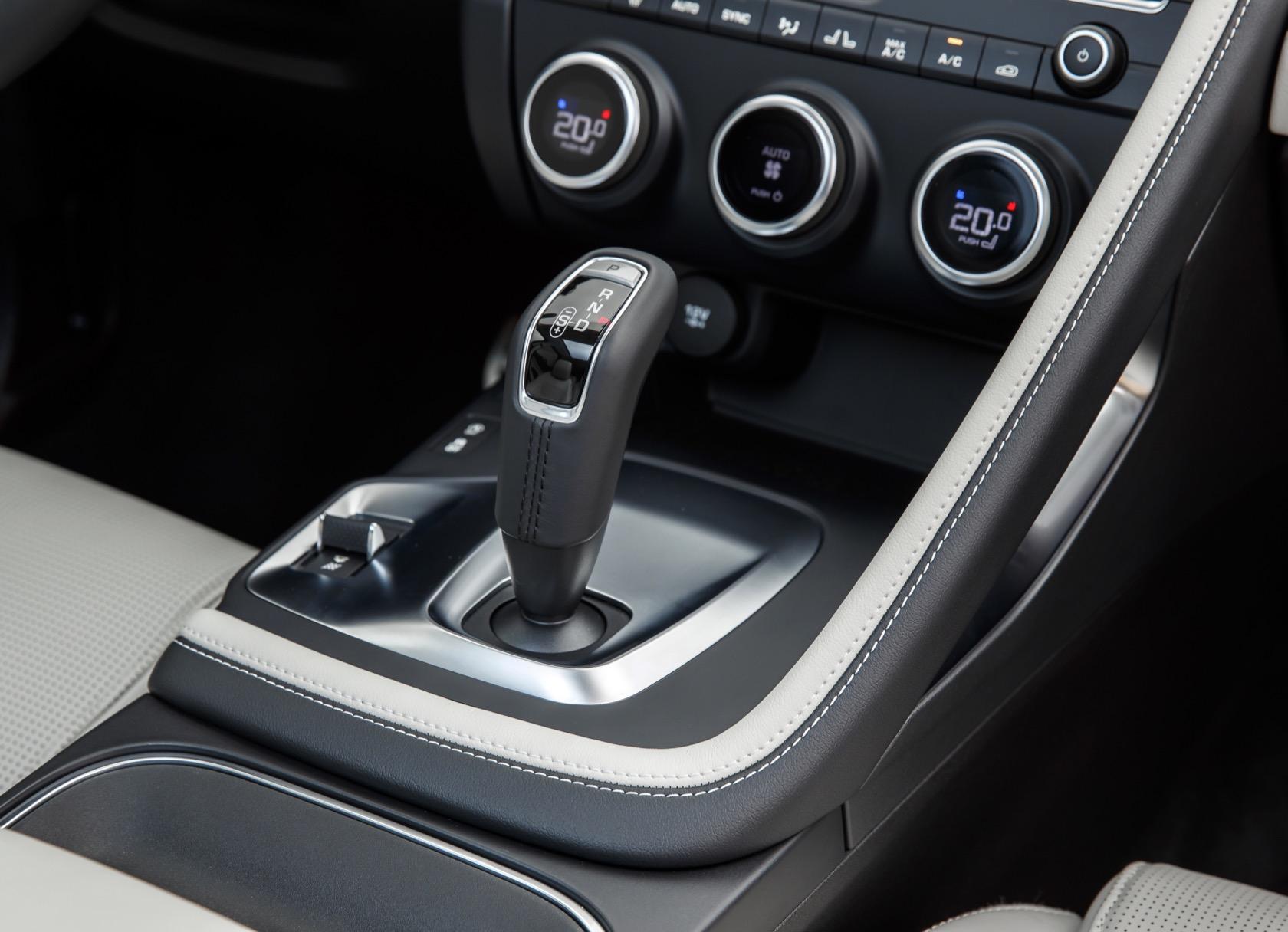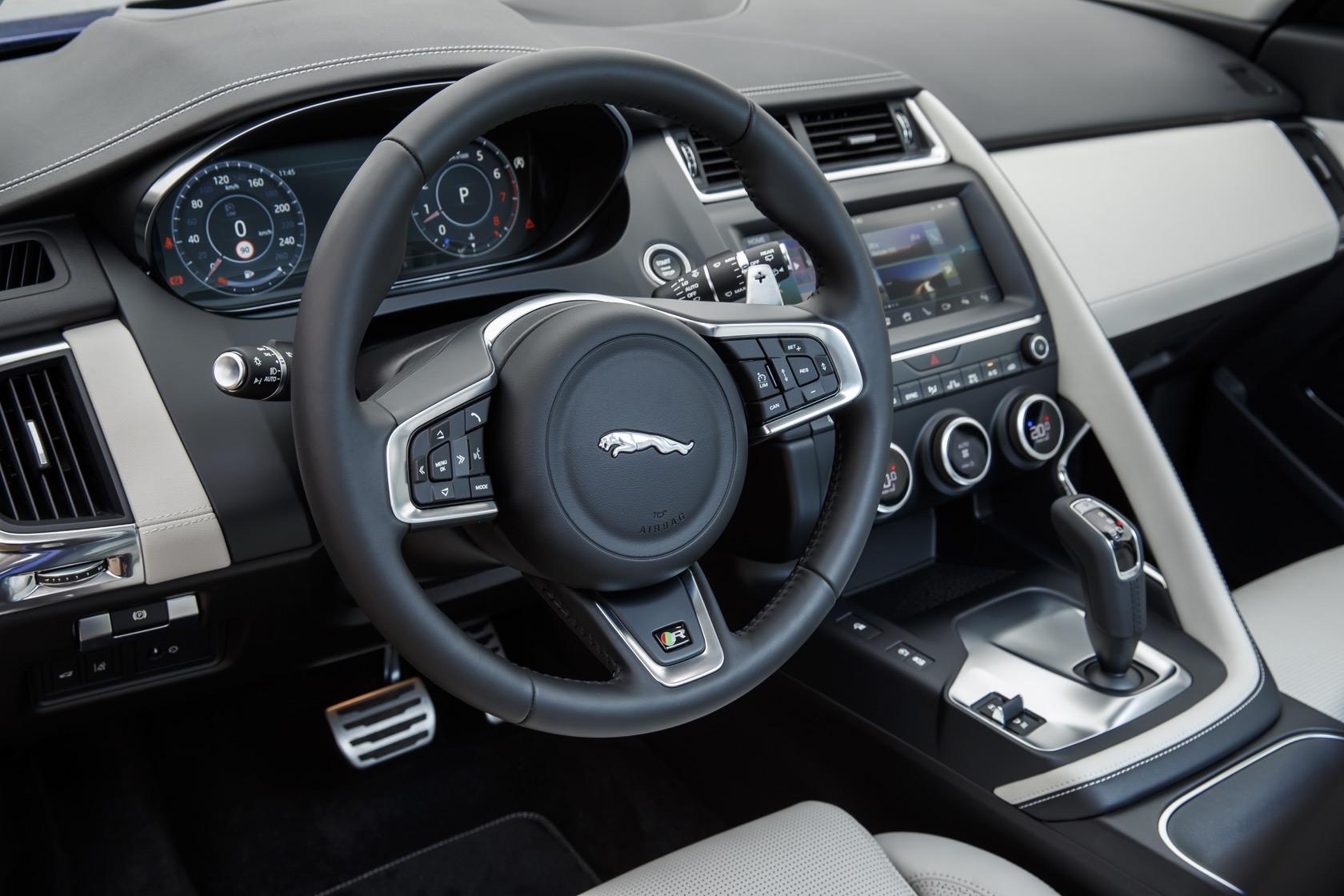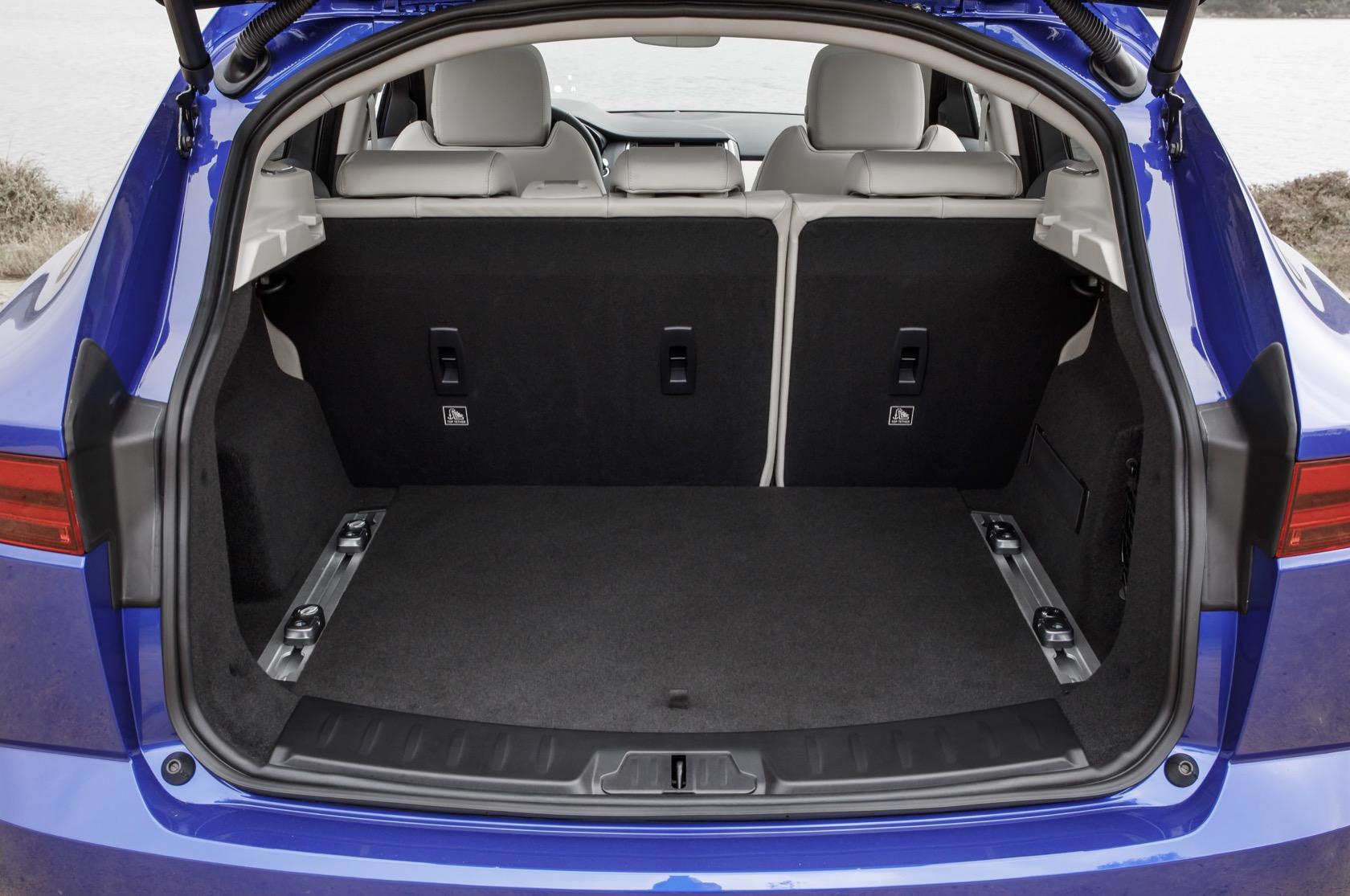2018 Jaguar E-PACE First Drive: The crossover cub
The world may have embraced the practical charms of the SUV but, as the 2018 Jaguar E-PACE demonstrates, there's still room for experimentation when you're building a compact crossover. Second in the automaker's SUV line-up, and arriving just ahead of the all-electric Jaguar I-PACE, the new 2018 E-PACE is an unusually thoughtful take in a segment jam-packed with options. Indeed, a whole lot more thought has gone into the E-PACE than the tiny footprint might suggest.
The obvious option – certainly, the route most automakers have taken when designing smaller crossover versions of their larger SUVs – would be for Jaguar to have shrunk the F-PACE. Blame British obstinance, a lingering obsession with sports cars, or a design team that skews to the young side, but the E-PACE actually shares more cues with the F-TYPE coupe. With its oversized grille, headlamps that stretch up into the front fenders, and low glasshouse, that's no bad thing.
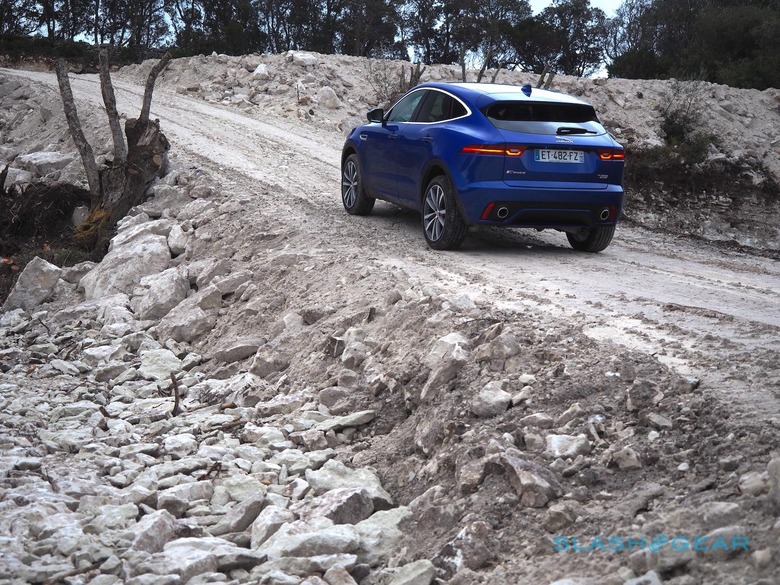
Indeed, it's a masterclass of misleading proportions. The E-PACE is about a foot shorter than the F-PACE – it's even a few inches shorter than the F-TYPE itself – but look at it in isolation and you'd never suspect that. It's actually about as wide as the larger SUV, giving it the stance of a beefier vehicle from the front or back. The wheels are pushed out to the extremes, literally in the case of the very short rear overhangs; at the front, Jaguar shaved away at the corners of the car to visually lessen them. Viewed from the rear three-quarters, the front overhang practically disappears.
The proportionally long wheelbase pays its dividends in cabin space. There's more headroom in the back than you might expect from the tapering side glass, another stylistic trick, and while you'd not want to share the rear bench with two other adults, there's plenty of space for a couple of grown-ups there. The trunk offers 24.2 cubic feet, or 52.5 cubic feet when the 60/40-split rear seat is folded.
I far prefer the E-PACE's dashboard to that of the F-PACE, too. The larger SUV's console is a sober affair, with stretches of shiny black plastic and dull switchgear. The E-PACE isn't short on plastic itself – the transmission shifter is particularly underwhelming, for a control you touch so frequently – but the circular HVAC dials with their inset displays, chunky drive mode toggle, and chrome paddle-shifters are far more engaging visually, not to mention reminiscent of the F-TYPE. The wheel, indeed, is lifted wholesale from the sports car, and though the inset swathes of leather across the dashboard aren't, in fact, real hide, they do look great.
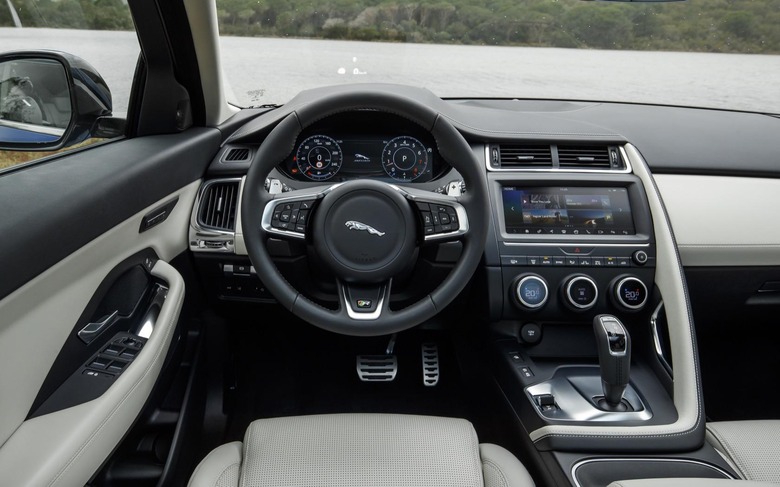
There's a 10-inch infotainment touchscreen as standard, and a wider 12.3-inch upgrade along with an optional head-up display. Jaguar's InControl Touch Pro is thankfully speedier than previous iterations, though still reserves the right to be a little temperamental at times, particularly when all you want to do is pipe your smartphone's audio through the otherwise fulsome Meridian audio systems. That can be had in up to 825W form. You can also switch the analog/digital driver instrumentation for a fully-digital version, though honestly there's not much customization in the graphics between the drive modes.
Unlike international markets, which will get both FWD and AWD options and a choice of engines that includes turbodiesels, Jaguar is keeping it simple for the US. Every American E-PACE will be all-wheel drive, and there'll be just two engine options, both using the same 2.0-liter turbocharged four-cylinder. One is tuned for 246 horsepower and 269 lb-ft. of torque; the R-Dynamic, which I spent my time in, bumps that up to 296 horsepower and 295 lb-ft.
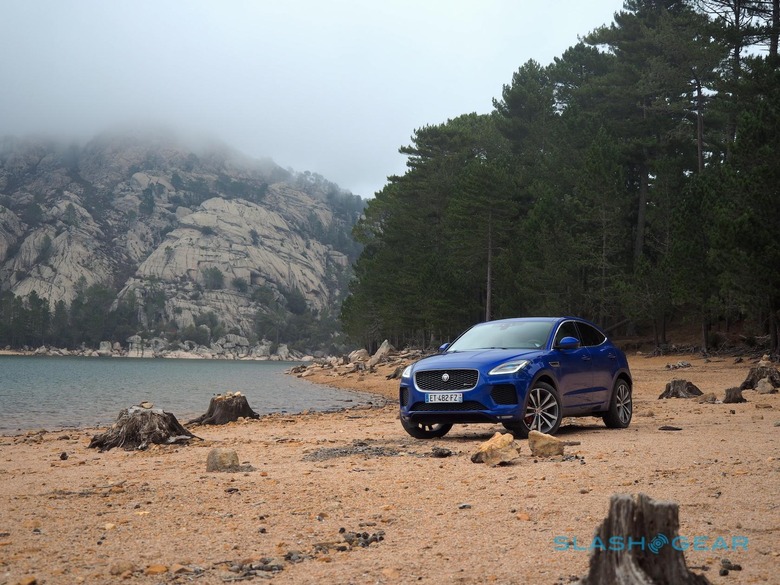
Either way you get a ZF 9-speed automatic transmission as standard, and a little torque lag at low engine speeds. It's disguised somewhat when the gearbox is in Sport mode, though that's a fairly frenetic experience not best suited for everyday driving. Despite the F-TYPE connection and a 5.9 second 0-60 mph time from the 296 HP model, there's still no disguising the 4,000+ pound curb weight, though the E-PACE does its best to offset that in Dynamic mode.
It sounds better inside than out – probably the way you want it, really, if you had to choose – and in Comfort mode the ride is positively supple. On 20-inch wheels that's absolutely not a given, normally, but the E-PACE has the poise to carry them off. ECO mode, meanwhile, seems to mostly just deaden the throttle disconcertingly. Still, with estimated EPA economy numbers coming in at 21 mpg in the city, 27 mpg on the highway, and 23 mpg combined in the 296 HP model, you're probably safe to avoid it altogether.
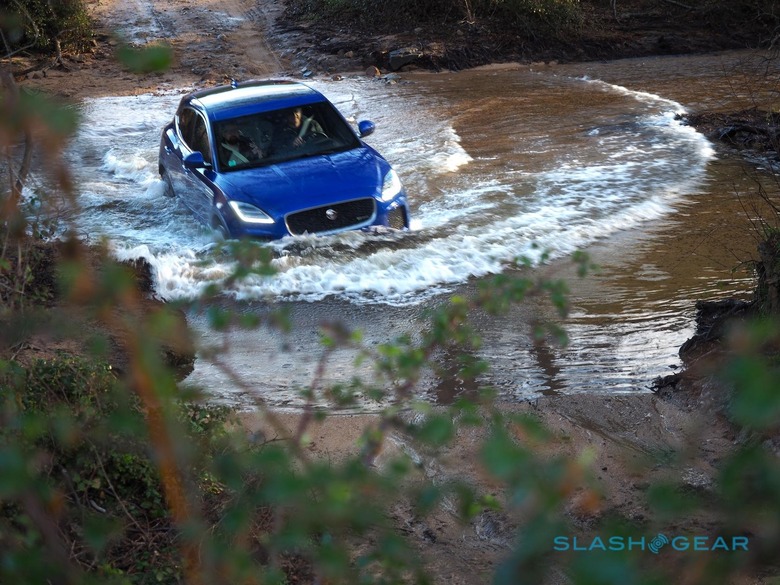
Then there's the rough stuff. The E-PACE, with its true off-road underpinnings borrowing from Land Rover's Evoque and Discovery, has an advantage over rival car-based crossovers, and Jaguar is hoping to capitalize on that for those who might find the front-wheel drive bias – even in AWD form – to smell just a little bit like blasphemy for the brand. Up to 90-percent of the power can be pushed forward or back, though most of the time it's the front wheels doing the work for economy reasons. That's not to say the E-PACE isn't equipped for the mud.
Torque vectoring can push extra power to the corners with the most traction, or the outside wheels in aggressive turns; there's a nifty little display that shows you just where the grunt is going if you're so inclined, but the overall upshot is that the E-PACE feels sure-footed even in curving mountain turns. The rear axle has twin wet clutches which can be locked for a more rear-wheel drive feel, though that's a decision left to the computer, not driver's choice.
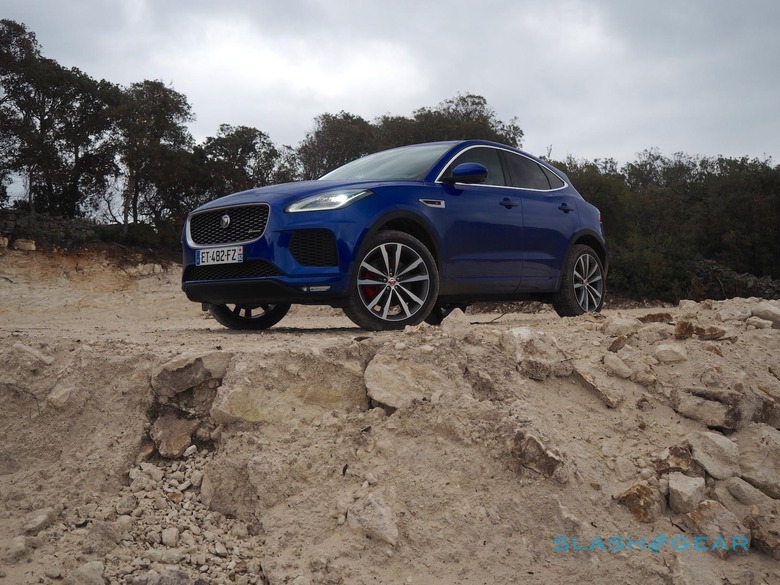
There's no dedicated off-road mode – you'll still need to look to an Evoque if you want a crossover with hill-descent, for instance, and the baby Range Rover's 8.5-inches of ground clearance towers over the Jaguar's 6.4-inches – but even in Comfort the E-PACE handled an extended foray away from the asphalt handily. I'm not talking anything too arduous; think along the lines of poorly-maintained sand and rock tracks, rather than something Dakar-worthy. Nevertheless, I suspect it's more than most E-PACE owners (or crossover drivers in general) would typically tackle, and the Jaguar scrambled over it without pause.
Wrap-up
I confess, I didn't expect to especially like the E-PACE. It's a car that really does look better in the metal than in pictures; Jaguar's big reveal was overshadowed by the I-PACE electric SUV, and I couldn't shake the feeling that this smaller, cheaper, gasoline crossover was a fairly calculated price play intended to share its EV sibling's style and halo, only without the next-generation powertrain. As is so often the British way, though, the charm only really comes through in person.
It may not match the driving dynamics of a Porsche Macan, but with pricing kicking off from $38,600 the Jaguar starts out almost $10k cheaper than its German counterpart. There are playful features too, like the "Jaguar and cub" graphic discreetly woven into the windshield, a reference to this smallest Jaguar's "cub" nickname from company design chief Ian Callum.
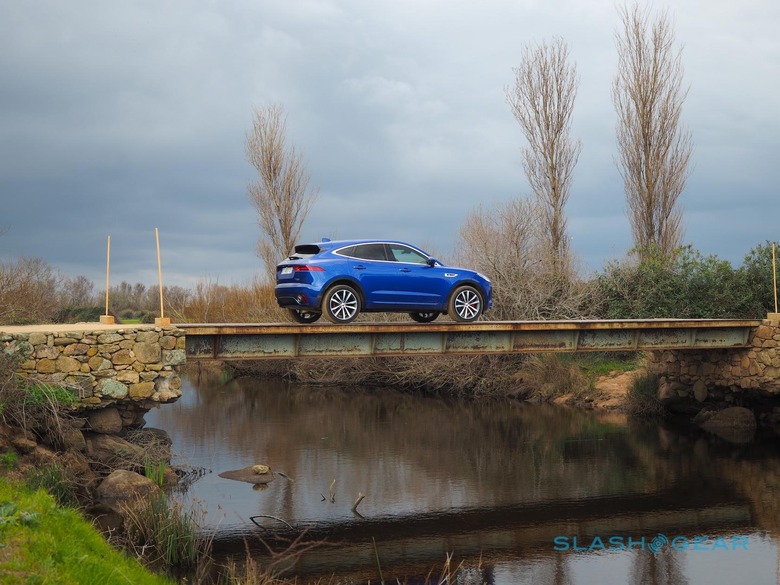
Of course, for the "cub" you really want, you're looking at a fair amount more than that starting price. R-Dynamic models begin at just over $47k, and the HSE trim car you see here is $53,100 before extras. That's not-inconsiderable money for a crossover on the small side, particularly when you start cross-shopping that sort of cash and find it'll get you a well-equipped Volvo XC60 or Audi Q5 from the segment above.
Jaguar expects, though, for drivers to feel the charm, and I wouldn't bet against it. The F-PACE is already the automaker's best-selling car, its reputation for sinuous coupes and rakish sports sedans be damned, and the 2018 E-PACE looks set to follow suit. Compelling styling, enthusiasm on the road, and attainable luxury in the cabin add up to a crossover with personality, even if it might not be the cheapest route to practicality.

